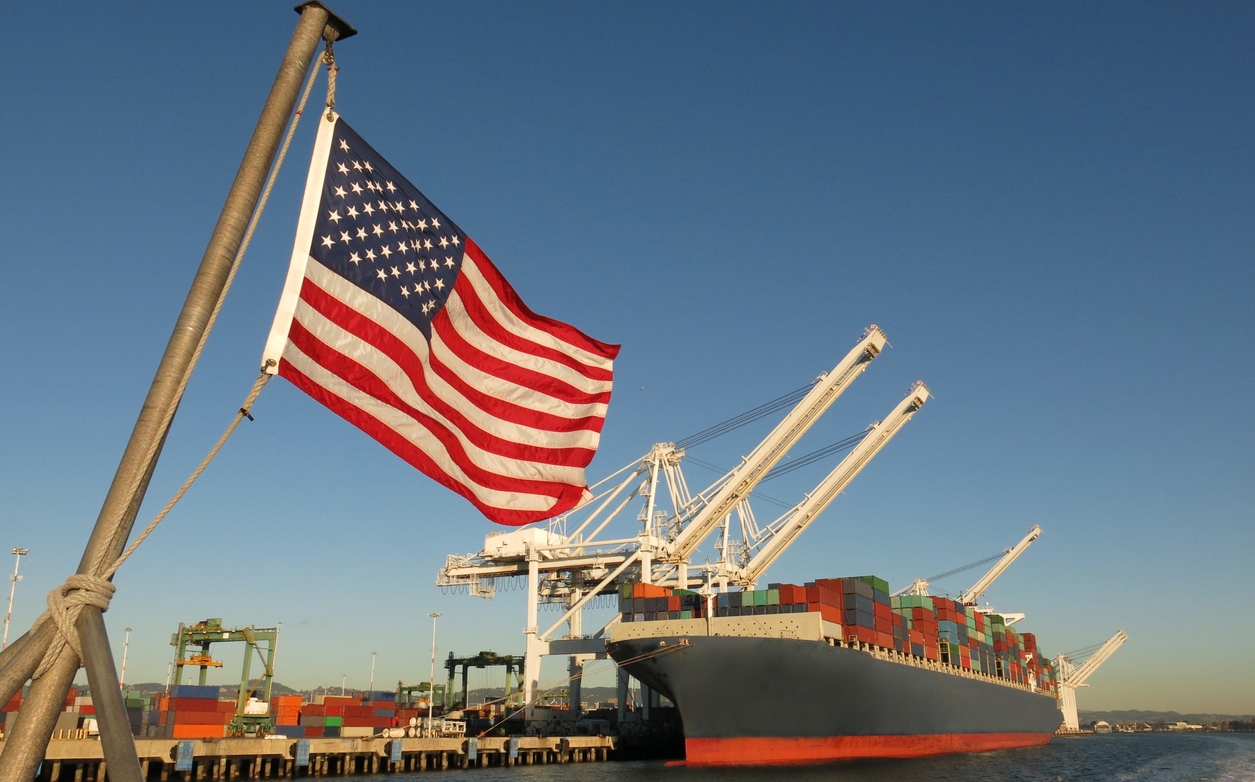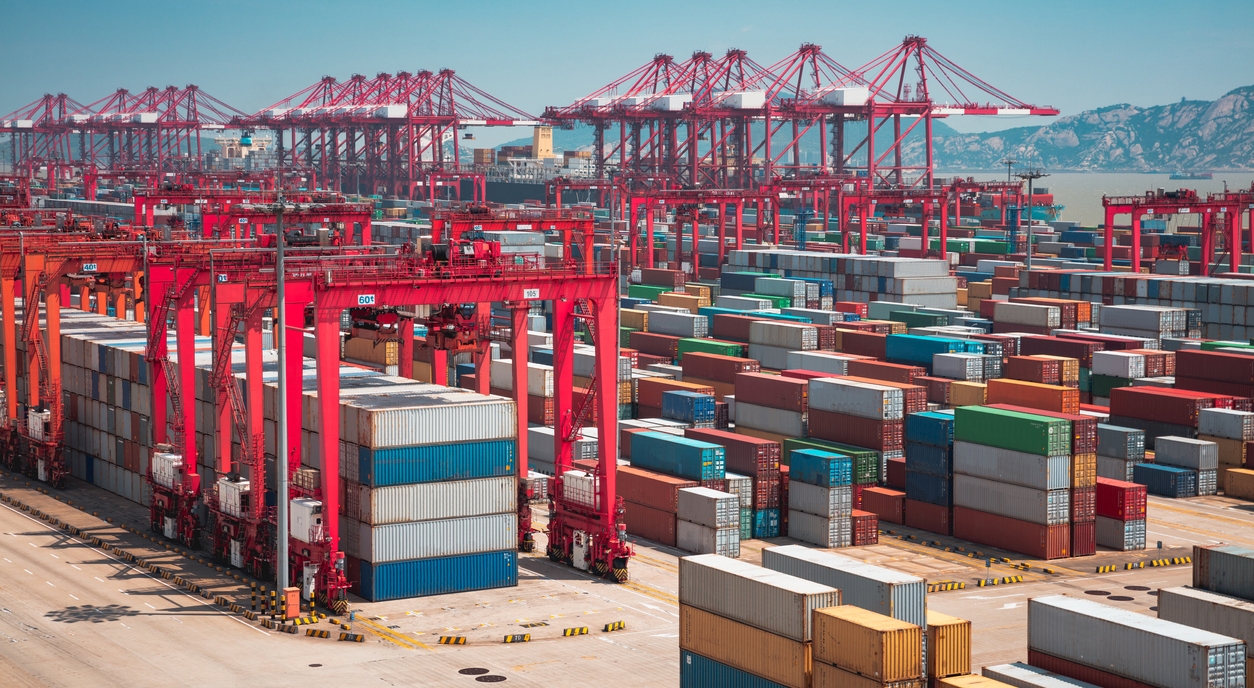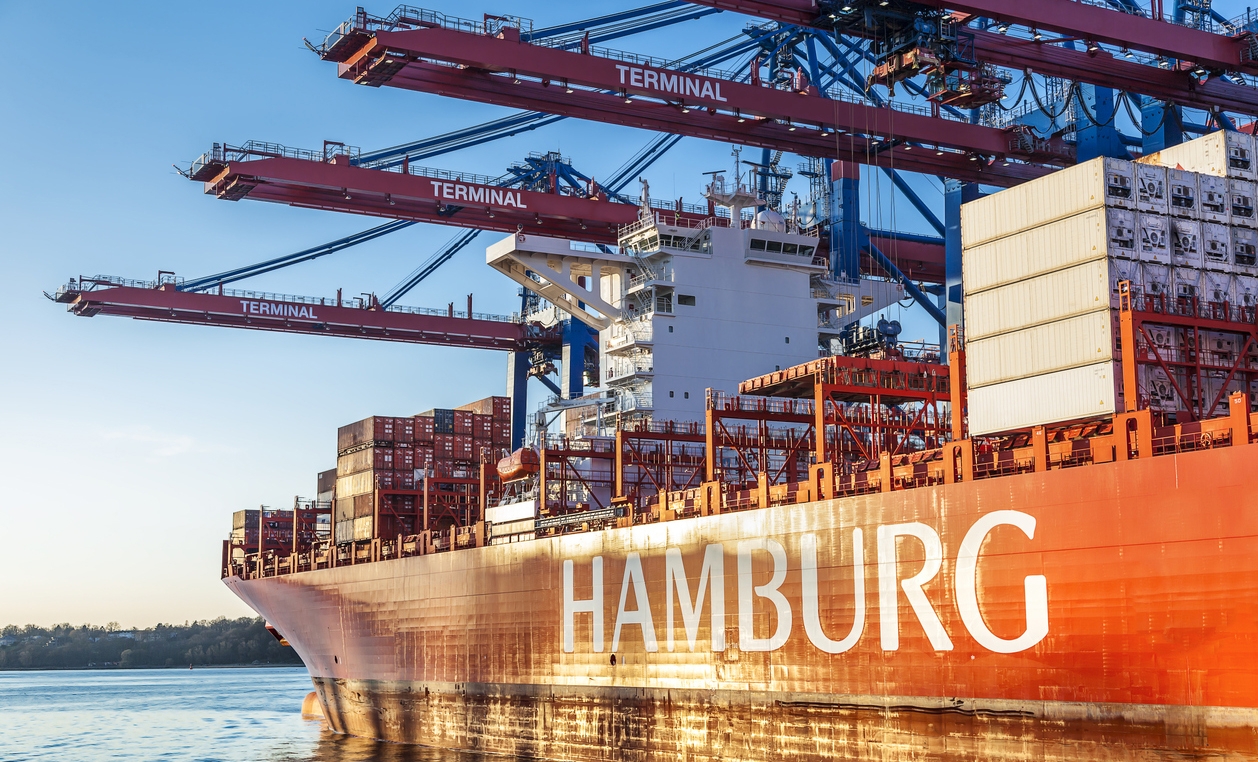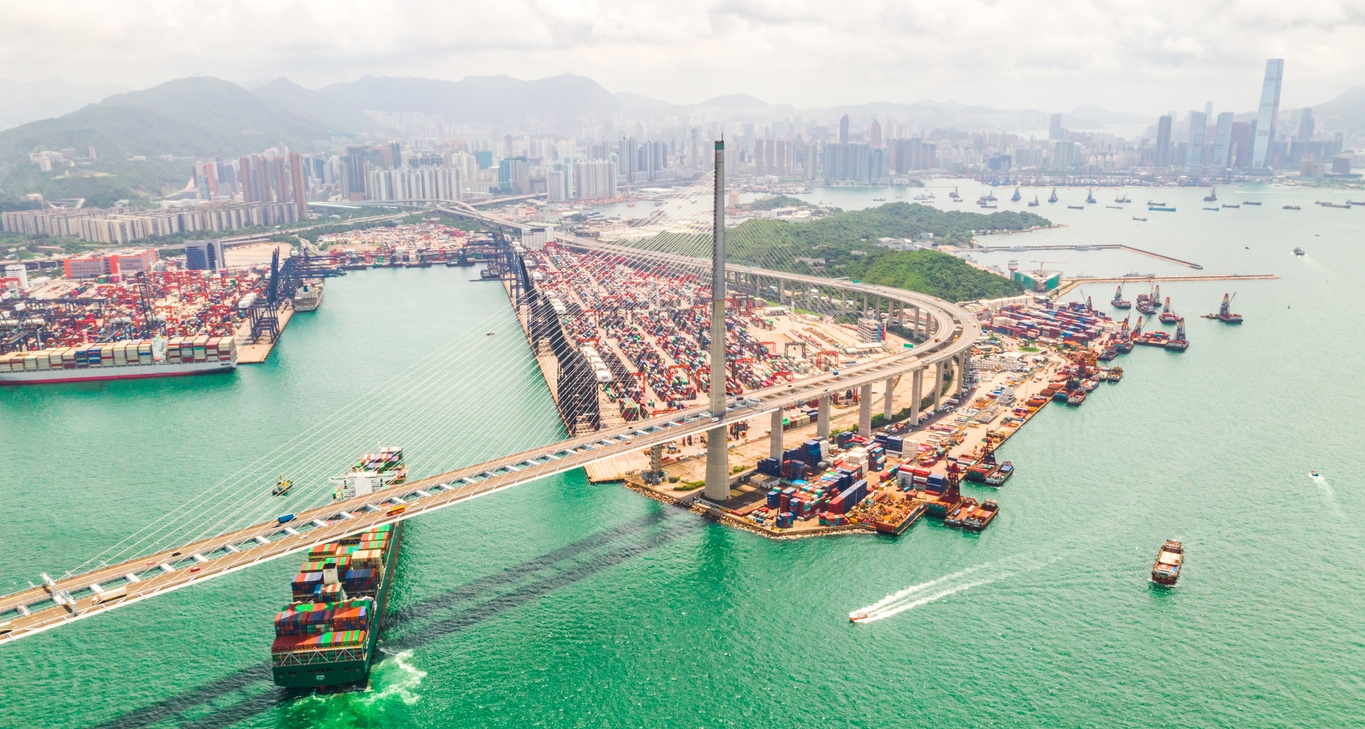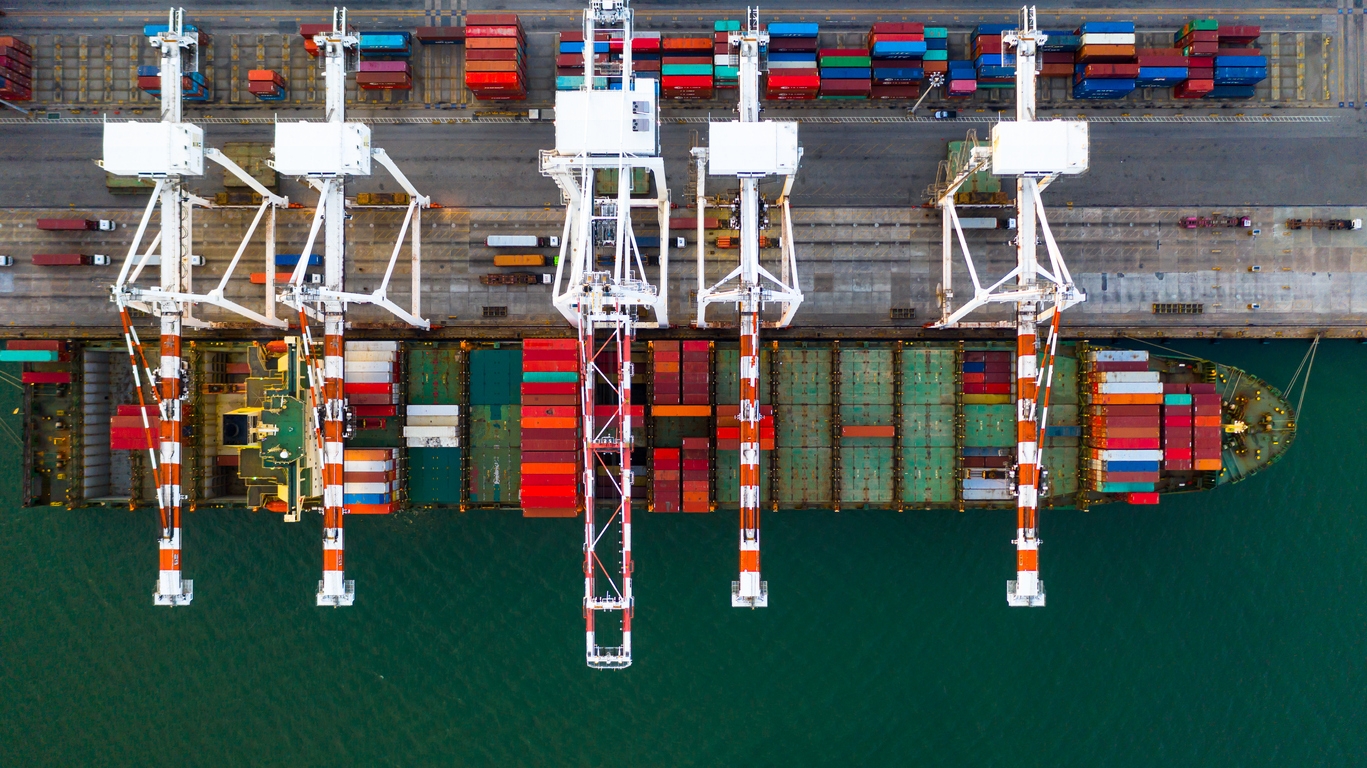Background
With the growth of the Internet, many businesses are increasingly engaged in international competition. When a company starts to grow and expand, its owners start aiming to up its competitiveness. [1] One of the ways to do this is by importing goods and services. Importing entails bringing items manufactured abroad into a country for resale. [2] For more than a thousand years, nations and kingdoms have traded things with one another. In the entire world, no nation is self-sufficient. To satisfy local demand, you either export excess production or import products you can’t manufacture profitably in sufficient numbers.
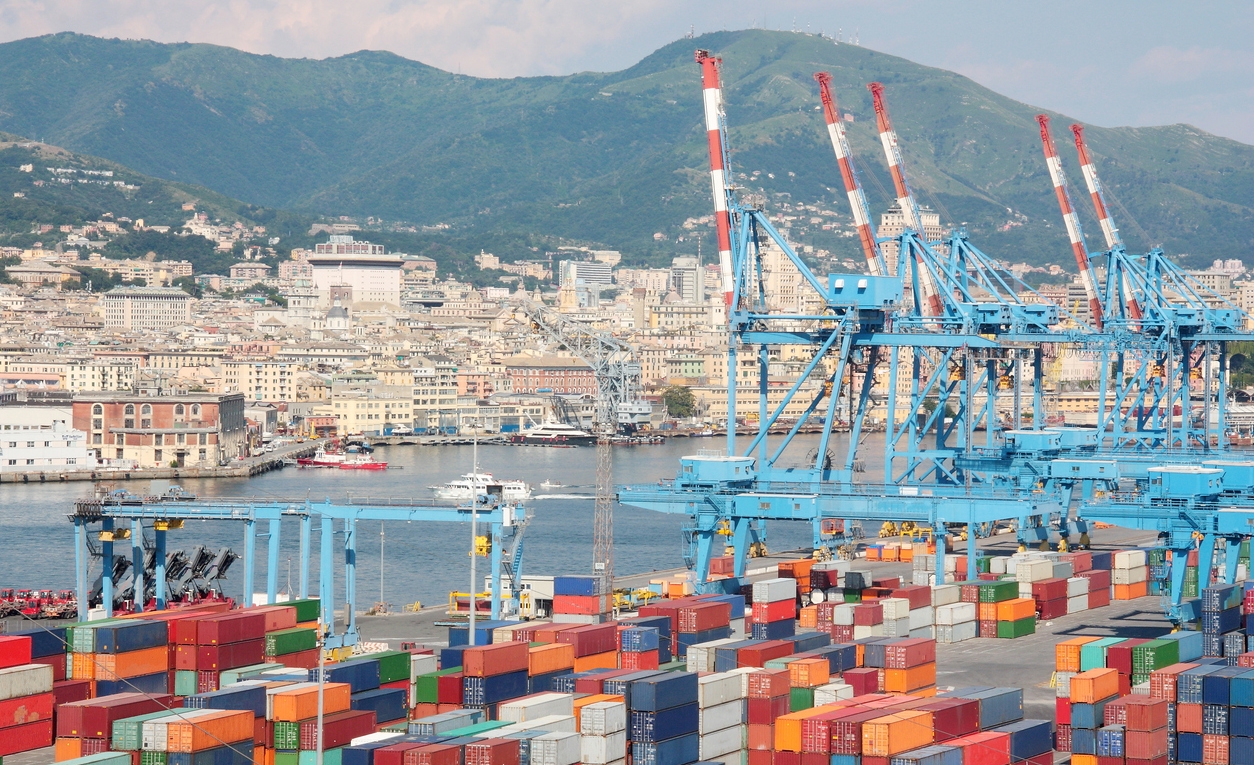
container Terminal in the port of Genoa Italy

freight airplane flying above overseas shipping container
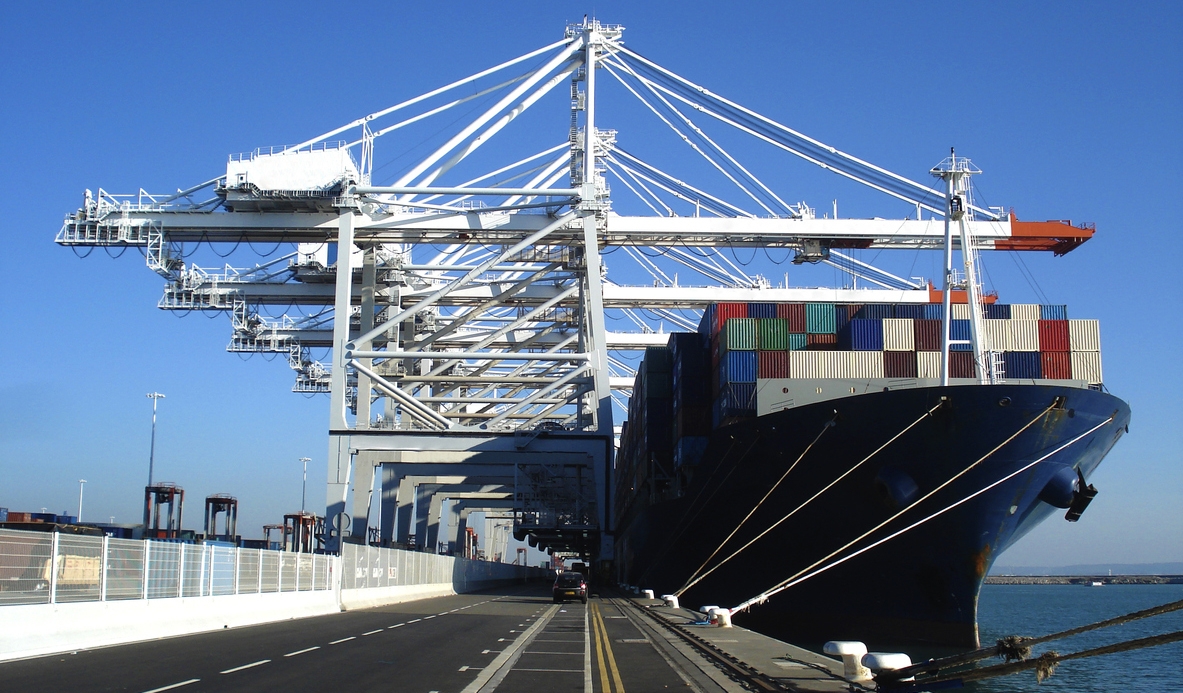
Huge cargo container ship at the commercial loading dock of Le Havre in France
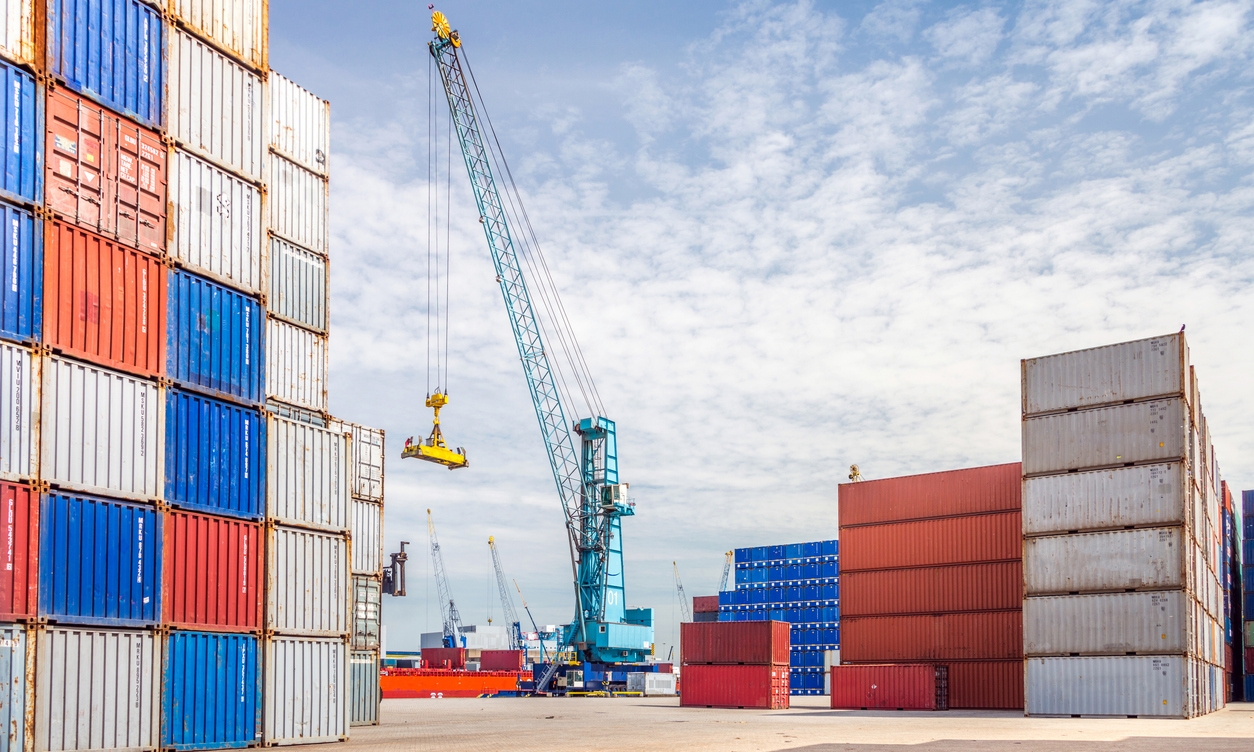
container port with crane in Rotterdam, Holland
With this, have you ever wondered which countries are the largest when it comes to importing goods and services? If you have the same question in mind, we are here to help you. In this post, we are giving you the ranking of the ten largest importers in the world.
The 10 Largest Importers in the World
Take a look at the infographic below to see the rankings of the ten largest countries in the world that import goods and services.
THE 10 LARGEST IMPORTERS IN THE WORLD |
|||
| RANK | COUNTRY | IMPORTS (2020) |
MOST IMPORTED PRODUCTS |
| 1 | United States | $2.41 trillion | industrial supplies, automobiles, clothing, medicines, furniture, toys, computers, telecommunications equipment, motor vehicle parts, office machines, electric power machinery |
| 2 | China | $2.05 trillion | electrical and other machinery, oil, mineral fuels, optical, medical equipment |
| 3 | Germany | $1.17 trillion | machinery, data processing equipment, vehicles |
| 4 | United Kingdom | $634.71 billion | manufactured goods, machinery, fuels, foodstuffs |
| 5 | Japan | $634.51 billion | petroleum, liquid natural gas, clothing |
| 6 | Netherlands | $596.75 billion | machinery and transport equipment, chemicals, fuels |
| 7 | France | $582.35 billion | machinery and equipment, vehicles, crude oil |
| 8 | Hong Kong | $569.77 billion | electrical machinery, computers, gems, precious metals, medical apparatus, mineral fuels, oil |
| 9 | South Korea | $467.63 billion | crude oil/petroleum products, semiconductors, natural gas |
| 10 | Italy | $422.88 billion | engineering products, chemicals, transport equipment, energy products, minerals and nonferrous metals |
The statistic lists the top 10 import-producing nations globally in 2020. The U.S. was the world’s largest importer in 2020, with imports totaling roughly 2.41 trillion US dollars. The top three exporting and importing nations globally, but in different order, are the United States, China, and Germany. Oil, fuel, technological devices, and machinery make up the majority of traded products and commodities. The amount of commodities traded on a global scale has significantly expanded in recent years. [3]
1. United States
The biggest economy in the world and the biggest importer of products is the United States, with $2.41 trillion worth of imports in 2020. Industrial supplies, vehicles, apparel, pharmaceuticals, furniture, toys, computers, telecommunications equipment, motor vehicle parts, office equipment, and electric power machinery are the most imported goods in the US. [4]
As of November 2020, the top five trading partners of the United States were China, Canada, Mexico, Japan, and Germany. One of the largest free-trade zones in the world was established in 1994 as a result of the North American Free Trade Agreement (NAFTA), which involved two of these nations. This permitted the unfettered flow of materials and goods between the United States, Canada, and Mexico with very few limits. [5]
In the United States, there is rising concern about the country’s supply chains being overly dependent on exporters like China. There is a growing effort to rely more on inexpensive commercial partners like Vietnam. In fact, the economy of Vietnam is already a hotbed for the commercial production of clothes and fashion items. The US is making an effort to rebuild its economy and bring back its own industries and electronics production. Since firms cannot migrate overnight, the trend will take years to materialize, but it already seems to be doing so. [6]
2. China
China is the largest manufacturer and exporter of manufactured goods in the world and the second largest importer of products, with $2.05 trillion worth of imports in 2020. Its main imports are from South Korea, Japan, the United States, Germany, and Australia and include integrated circuits, crude oil, iron ore, vehicles, and gold. [6]
One of the biggest importers of foods like soybeans is China. Despite current tensions with the US, this trend has not really slowed down. Other nations are attempting to wean their economy off of reliance on Chinese-based consumers. On the list of the top 10 countries importing the most goods from China, Germany, and the United Kingdom are discussing cutting back on the number of items they buy from China. [6]
3. Germany
The top three importers in the world bring in a combined total of more than $1 trillion each year. Germany still imports automobiles in large quantities, and the country is a global center for the automobile industry. Medicines, crude oil, broadcasting equipment, and auto parts are among the other significant imports. [6] In 2020, the United States, France, China, the Netherlands, and the United Kingdom were Germany’s top 5 trading partners. [4]
Despite having large economic material demands, Europe sells more than $1.5 trillion worth of goods annually. Germany is a prime example of a flourishing, successful economy that has managed to withstand globalization and continue to export high-end goods. German commercial products of the highest caliber are associated with brands like BMW and Mercedes. Germany does not only export automobiles; industrial and electric machinery are among its top exports. [6]
4. United Kingdom
The United Kingdom has the 5th largest economy, and it is the 4th largest importer in the world, with $634.71 billion worth of imports in 2020. Its top trading partners include the United States, the Netherlands, Germany, France, and Ireland. Some of its most imported products are manufactured goods, machinery, fuels, and harvests. [4]
There are uncertainties on how the UK will interact with significant trading partners, both close by like France and farther away like the US and Canada. While the UK and France have been friends since World War I, history can be a tough guide in this case. History reveals that the two nations have been at war for hundreds of years prior to World War I. Importers are already worried about how the industry will operate as the UK quits the EU. [6]
5. Japan
In the world, Japan has the 3rd largest economy, and it is the 5th largest importer, bringing in a total of $634.51 billion annually. [4] [7] Japan, like South Korea, is reliant on imports to meet its energy needs. The country imports the most gas and crude oil, then broadcasting equipment and integrated circuits. China and the United States account for 25% and 11%, respectively, of Japan’s imports. [6]
6. Netherlands
Petroleum products in their raw and processed forms, as well as equipment for broadcasting and transportation, are the Netherlands’ main imports. The Netherlands’ top trading partner by far is Germany. Additionally, China, Belgium, Luxembourg, Russia, the United States, and the United Kingdom are major suppliers of goods to the Dutch. [6] One of the busiest ports in the Netherlands is Rotterdam, which has coal and iron ore as top imports. Another one is Amsterdam, which imports cocoa, iron ore, and oil products the most. [4] In 2020, the Netherlands had $596.75 billion worth of imports.
7. France
France is among the world’s largest exporters of goods, but it imports even more. Back in 2018, it purchased products worth $672 billion and $532.85 billion in 2020. These imports consist of crude, automobile, refined oil, gas, and aircraft components. In addition to that, France exports a lot of food, chemicals, perfumes, and transportation equipment. France and Germany are seen as the two primary pillars of the EU following Brexit. [6]
8. Hong Kong
One of the biggest importers in the world is Hong Kong, a region with a special administrative status within China. Mainland China is where it conducts the majority of its trade. In 2020, it brought in $569.77 billion worth of commodities. Almost half of the goods bought came from China. The biggest purchases made by Hong Kong include integrated circuits, broadcasting gear, phones, and office supplies. [6]
9. South Korea
South Korea, which has a population of close to 50 million, is a developed nation close to China and Japan. [6] It has the 11th largest economy and is the 9th largest importer in the world. [4] In 2020, South Korea imported goods worth $467.63 billion. The biggest purchases made by the nation are crude oil, integrated circuits, petroleum gas, and photo lab equipment, with more than 20% of its imports coming from China. The US and Japan are two of South Korea’s other top trading partners. [6]
10. Italy
Italy is the eighth-largest economy in the world and the third-largest economy in the Eurozone. With an estimated $422.88 billion in purchases in 2020, it ranks as the tenth largest importer. Engineering goods, chemicals, transport equipment, energy goods, minerals, and nonferrous metals are a few of the most popular imports from Italy. Additionally, steel goods and crude oil are imported. [4]
Benefits of Importing Products
Each nation is equipped with a certain set of resources. A nation could also be short on resources that are necessary for economic growth and improvement. For instance, whereas some nations have abundant minerals, precious metals, and fossil fuel resources, others are lacking in these supplies. Some nations have highly advanced infrastructures or educational systems, whereas others have not.
When people discuss importing in the context of trade, they are talking about getting goods or services from another nation. The importing company or person will then offer these goods or services to customers, expanding their range of possible purchases. There are numerous more advantages to importing that should also be taken into account. Here are some of them:
Availability of New Products in the Market
Chinese and Indian companies frequently make products for the European and American markets. This is primarily caused by the size of these markets and the residents’ relative wealth. However, it could take a year or more after a new product has been released in these two areas before it is presented in other, smaller markets.
Entrepreneurs in different countries can import a product made in China if they find it appealing or beneficial and introduce it to their potential customers. Due to the growth of the internet, business owners may now research the market before importing a certain product. This will enable them to ascertain whether there is a genuine market demand for such an imported good so that they can prepare an efficient marketing plan in advance. [1]
Lowering Costs
The decrease in manufacturing expenses is another significant advantage of importing. Today, many businesses discover that importing goods, goods’ components, and resources are more cost-effective than creating them domestically.
Entrepreneurs frequently come across high-quality goods that are also reasonably priced, even when the total cost of imports is taken into account. Entrepreneurs decide to import items in order to cut expenses rather than spending money on pricey, sophisticated machinery. In order to obtain a better price and save expenditures, they typically end up placing massive orders. [1]
Becoming an Industry Leader
The possibility of dominating the market in the target industry is one of the main advantages of importing goods. Since creating new and improved items is a never-ending process, numerous companies all over the world take advantage of the potential to import novel goods before their rivals do. You can quickly get to the top of your industry by being the first to import a new product. [1]
Offering High-Quality Goods
The capacity to sell high-quality goods is a further advantage of imports. Many prosperous businesspeople venture abroad to visit factories and other highly skilled vendors in search of premium goods to import back home. To ensure that the company abroad is adequately equipped to sell their products, manufacturers may also offer instructive courses and training, as well as introduce standards and practices. [1]
Conclusion
Despite efforts to maintain economic independence, commerce is virtually always necessary. Countries’ economies start to grow once they start exporting the items that they are abundant in and importing the ones they are lacking. Customers can gain from specific goods or parts that aren’t made nearby but can be bought from a company in another country. Globalization and trade seemed to be expanding during the past few decades, and they seem to continue in the coming years. We hope this post helped you learn more about the largest importers in the world.
References
- https://www.aacb.com/benefits-of-importing-and-exporting/
- https://www.shopify.com/encyclopedia/importing
- https://www.statista.com/statistics/268184/leading-import-countries-worldwide/
- https://uk.worldoptions.com/news/worlds-top-exporters-and-importers
- https://www.investopedia.com/terms/i/import.asp
- https://www.valuewalk.com/2019/10/top-10-largest-importers-in-the-world/
- https://commodity.com/data/japan/



